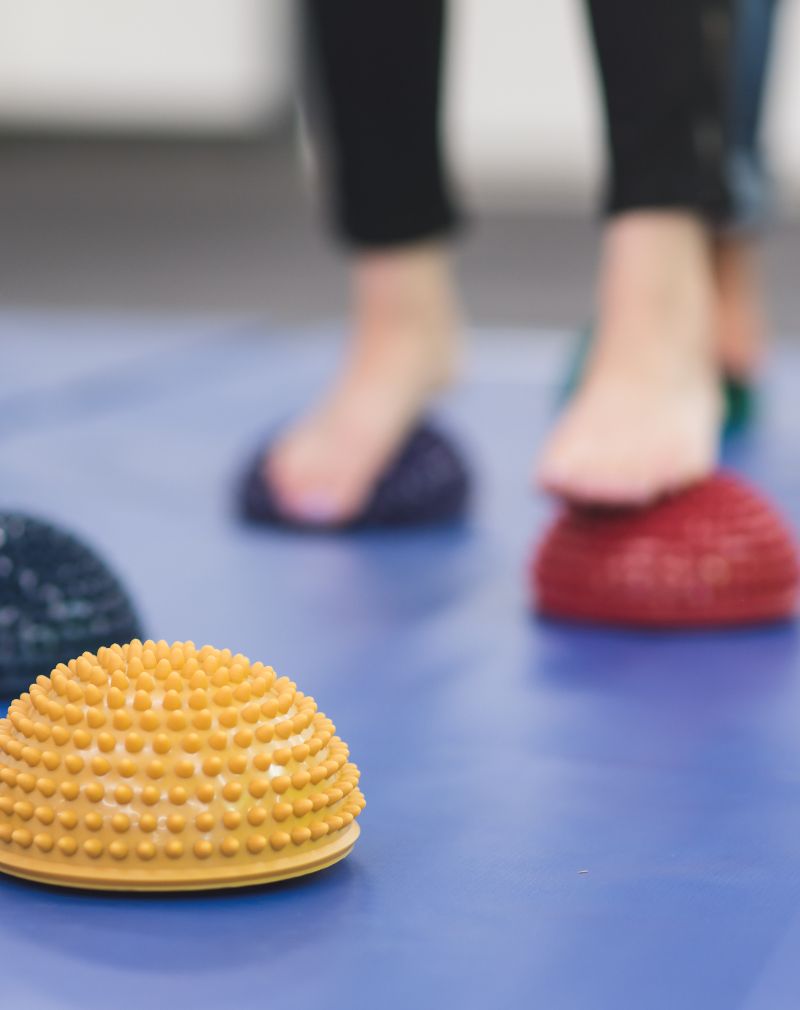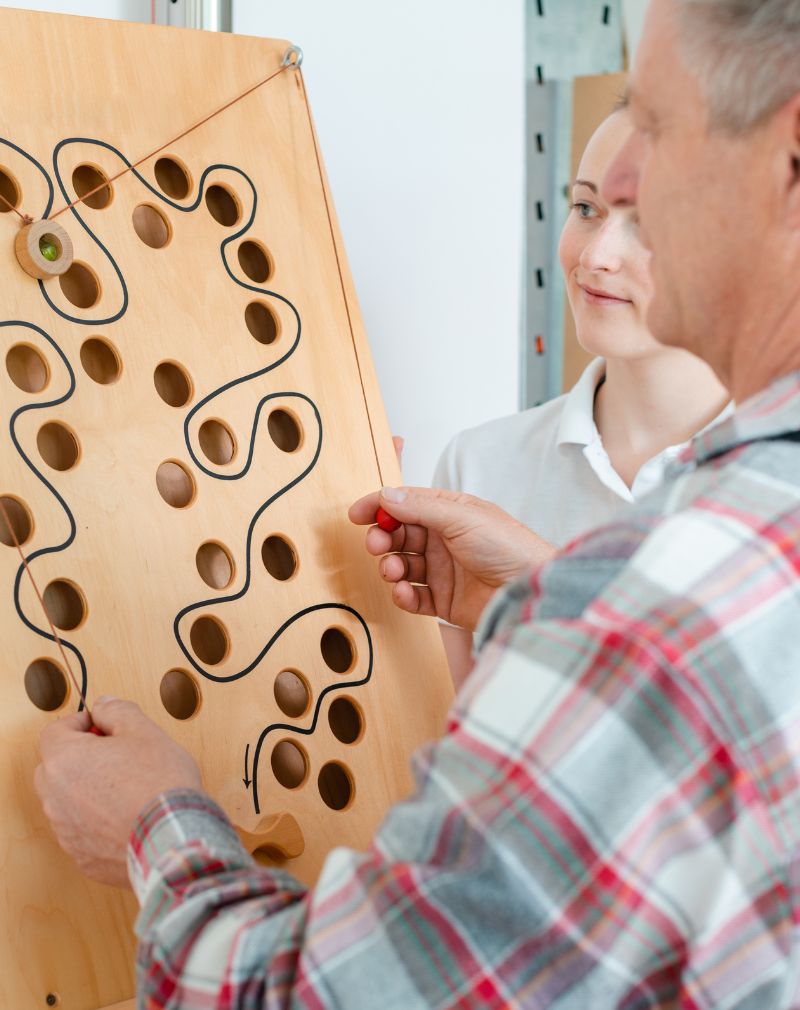You walk into a room and feel it instantly: the lights are too bright, the noise too sharp, the air too heavy.
No one else seems to notice. But your skin itches under your clothes, your jaw clenches, and your mind starts to shut down.
These aren’t personality quirks. They’re not “being sensitive.” They’re what it feels like when your nervous system can’t filter the world around you.
It’s exhausting. It’s isolating. And most people have no idea it’s even happening.
Sensory processing difficulties don’t just affect children. In fact, nearly 1 in 5 adults live with them—often quietly, often misdiagnosed. Especially if you’ve got anxiety, ADHD, or trauma sitting in your history.
At The American Wellness Center in Dubai Healthcare City, our Occupational Therapy team helps adults make sense of this. We don’t hand you coping tips. We help you reclaim comfort in your own skin.
This isn’t about pushing through. It’s about finding out why you’re burning out in spaces that don’t seem hard for anyone else. And then finally doing something about it.
You’re not broken. But your nervous system may be overwhelmed. And that’s something we can treat.
What Is Sensory Integration Therapy in Adults
Your body takes in thousands of signals every minute. Light, noise, textures, movement. Most people filter them out without even noticing. But if you can’t filter them, you feel everything. All the time.
Sensory Integration Therapy helps your brain and body make peace with that chaos.
It’s not talk therapy. It’s not about fixing your thoughts. It’s hands-on, body-first work done by occupational therapists who understand how the nervous system reacts to the world.
Some adults shut down when things feel too much. Others seek more noise, more pressure, more movement—just to feel regulated. Neither is wrong. But both can make life harder than it needs to be.
This therapy meets you where you are. It doesn’t force your body to adapt. It teaches your system how to feel safe again. In clothes, in crowds, in your own home.
And the goal isn’t to tolerate everything. The goal is control.
Who Might Benefit From Sensory Integration Therapy
You don’t need a big diagnosis to struggle with sensory overload. But many adults who benefit from this therapy have walked through heavy doors.
Maybe you have anxiety that spikes in crowded places.
Maybe your brain doesn’t slow down, and you can’t focus unless there’s music blasting in your ears.
Maybe trauma rewired your senses, and now soft sounds feel like sirens, soft touches feel like alarms.
Occupational therapists at The American Wellness Center in Dubai Healthcare City see this every day in adults with:
- PTSD and complex trauma
- ADHD and executive function overload
- Autism traits—diagnosed or not
- Stroke recovery, brain injuries, and sensory loss
- Long-COVID effects: brain fog, noise sensitivity, exhaustion after errands
Recent research shows that adults with trauma are over twice as likely to develop sensory over-responsivity.
This isn’t rare. It’s just rarely talked about.
And it doesn’t have to stay that way.
Signs You May Be Experiencing Sensory Processing Difficulties
This isn’t about being picky. It’s not a personality flaw. It’s your nervous system doing too much—or too little—with the world around you.
If any of these feel familiar, you’re not imagining it:
- Crowded cafés make your skin crawl. Not because of people. Because of sound, echo, light.
- You avoid certain clothes—not for style, but because the fabric feels like sandpaper.
- You jump at soft noises. Or can’t focus unless there’s total silence.
- A day at the mall feels like a week’s worth of exhaustion.
- You dread open-office layouts, supermarket aisles, or any space that doesn’t let you breathe.
These aren’t quirks. They’re warnings. And they’re treatable.
How Occupational Therapists Use Sensory Integration Therapy at AWC
We don’t guess. We listen to your body and your story.
At The American Wellness Center in Dubai Healthcare City, Occupational Therapy starts with understanding how you respond to your environment. That means real-life questions, not just test scores.
What we do:
- Build a sensory profile—pinpointing where your thresholds are too high, or too low.
- Watch how you move, sit, react—not just what you say.
- Explore what calms you. What pushes you past your edge.
Then we build therapy around that. Not abstract goals. Daily realities.
Some tools we use:
- Weighted items: to help ground and center the body
- Movement routines: to reset a system stuck in overdrive
- Tactile materials: for those who need input to stay present
- Mind-body techniques: simple, non-invasive ways to calm the nervous system
- Work/home tweaks: subtle changes to lighting, seating, noise levels—small things that make a big difference
Every session is designed to help you do one thing: live easier.
And our team? Trained in trauma-sensitive care. Deeply respectful of neurodivergence. No shame. No pushing. Just support.
Outcomes That Matter
This therapy isn’t about fixing you. It’s about helping you function—with less friction, less shutdown, and more control.
Here’s what many of our adult clients notice within a few weeks:
- More focus, even in noisy or unpredictable settings
- Less anxiety when commuting, shopping, or socializing
- Better sleep—not just more hours, but real rest
- Fewer meltdowns. Less guilt. More space to breathe.
And most important:
More trust in your own body.
Recent outcome data from 2025 backs it up:
72% of adults in sensory-based occupational therapy reported better daily functioning within 8 to 12 weeks.
No loud promises. Just progress that feels real.
How Adult Sensory Therapy Differs From What You Might Expect
Most people associate sensory therapy with kids in colorful rooms. But adults live with sensory overload too. It just looks different.
We see it in:
- Workplaces that drain you before noon
- Commutes that leave you on edge before the day even starts
- Family settings where you snap, then feel guilty for snapping
- Clothes, sounds, or smells that make you itch, flinch, or retreat
Adult therapy doesn’t involve playrooms or bean bags. It involves:
- Learning how to sit through a meeting without feeling like your skin is on fire
- Building routines that don’t leave you overstimulated by noon
- Wearing what your job demands without it hijacking your nervous system
Some tools come from pediatric therapy, yes. But they evolve: fidget tools that help with focus, deep pressure techniques that ground you, short breaks that keep your brain from crashing.
This isn’t therapy made for children. It’s built for your real life.
When It’s Time to Get Support
You don’t need a diagnosis to deserve help. You just need honesty with yourself.
If you:
- Dread everyday settings—stores, offices, school pickups
- Feel exhausted after what should be a “normal” day
- Snap at people or shut down completely, then wonder why
- Mask your discomfort because no one else seems to struggle with the same things
Then it’s time.
Your nervous system is working harder than it should. Therapy helps it work smarter.
The Quiet Relief of Finally Being Understood
You don’t have to keep gritting your teeth through sounds, lights, textures, crowds, pressure. You don’t have to keep pretending you’re fine when you’re not.
There’s a name for what you’re feeling. There’s help for what you’re going through.
At The American Wellness Center in Dubai Healthcare City, our Occupational Therapists know how to listen to your body when even you can’t make sense of it.
You won’t be rushed. You won’t be dismissed. You’ll be met with care that’s calm, skilled, and designed for your life, not someone else’s.
If your world feels just a little too loud, too bright, or too much to carry, our doors are open.
You’re not imagining it. And you’re not alone.



